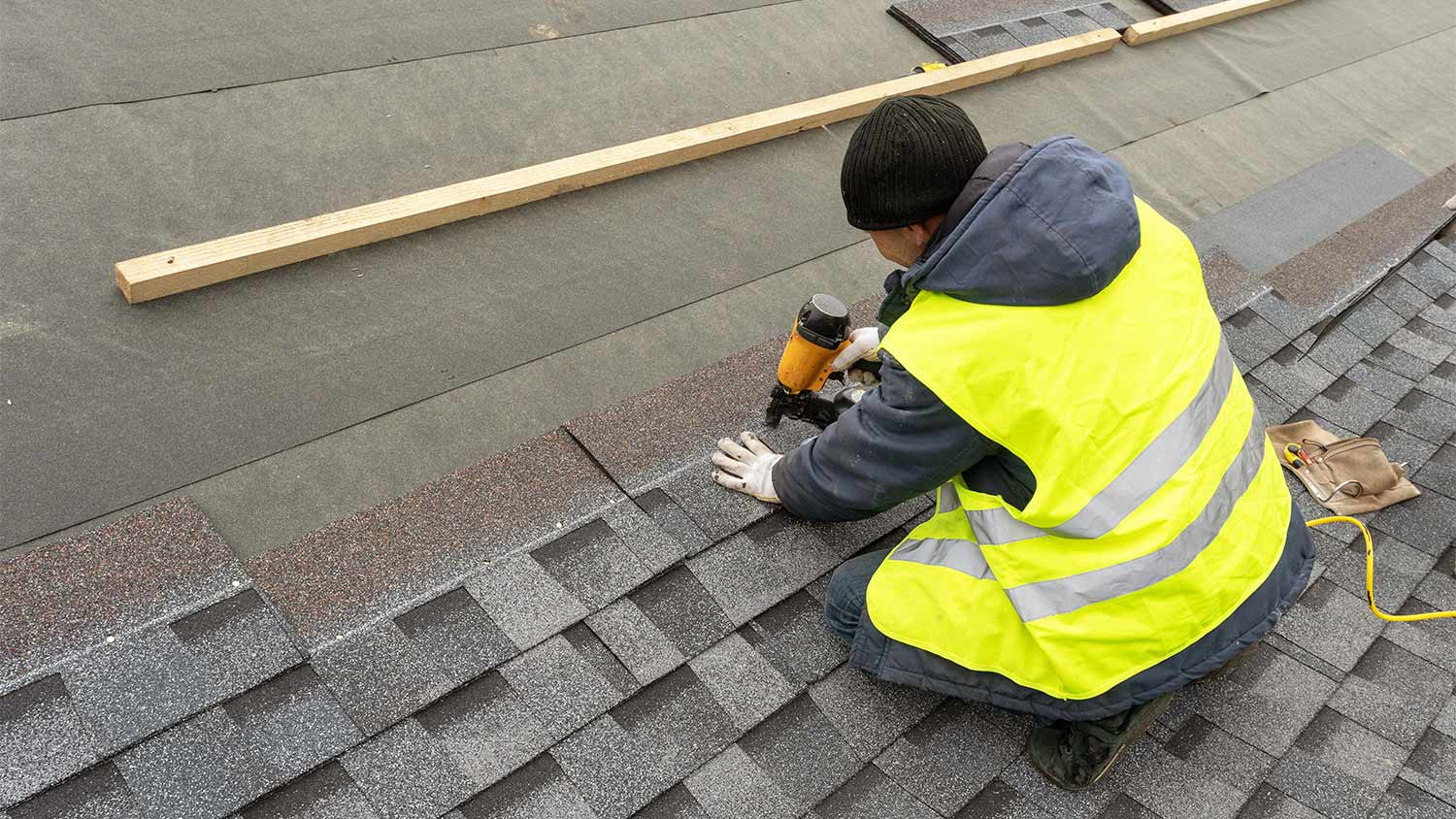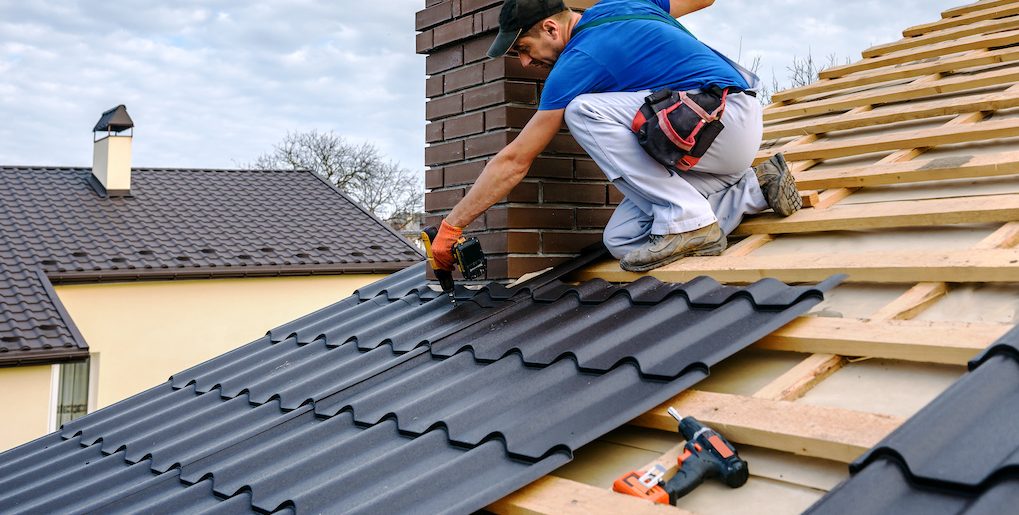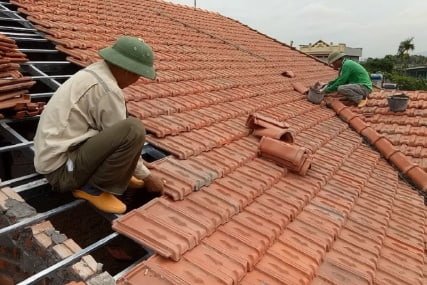
When you own a home, regular upkeep and maintenance are necessary to keep it in tip-top shape – including your roof! Whether planning for a roof replacement or just wanting to learn more about the process, it’s important to know what will be involved before starting a major project like this. We’ll break down the basics of roof replacement so you can ensure everything goes smoothly and return to enjoying your newly secured home.
Roof Replacement

A roof replacement is replacing an existing roof with a new one. This can be done for many reasons, including fixing the damage, increasing energy efficiency, or upgrading your home’s look. It is usually best done by a professional roofer with the experience and expertise to do the job correctly. Several things, including poor installation, poor maintenance over time, and weather damage, can cause a leaky roof.
Types of Roofing
When replacing a roof, choosing the right type of material is important. The most common types are:
1. Asphalt Shingles
2. Metal Panels,
3. Tile and Wood Shakes
Asphalt Shingles

Pros
Asphalt shingles are the most popular roofing material for a reason. They are affordable, easy to install, and protected from the elements. They come in various colors to customize your home’s look. Here’s a closer look at the pros of asphalt new shingles:
1. Durability – Asphalt shingles can last up to 30 years with proper maintenance. Additionally, the material is resistant to fire and strong winds.
2. Easy Installation – Asphalt roofs are lightweight, making them incredibly easy to install compared to other roofing materials like tile or metal roofing systems.
3. Variety – Asphalt shingles come in various colors and styles to customize your home’s look.
4. Cost-Effective – Asphalt shingles are some of the most affordable roofing materials on the market, making them a great choice for budget-conscious homeowners.
5. Low Maintenance – Asphalt shingles require very little maintenance and can be easily cleaned.
Cons
of Asphalt Shingles
Asphalt shingles may have a lot of pros, but they also come with some cons. Here’s a closer look at the downsides of asphalt shingles:
1. Short Lifespan – Asphalt shingles have a shorter lifespan than roofing materials like tile or metal.
2. Susceptible to Damage – Asphalt shingles are susceptible to water damage, which can lead to mould and mildew growth.
3. Susceptible to Wind Damage – Asphalt shingles are less resistant to strong winds than roofing materials like metal panels.
4. Heat Retention – Asphalt shingles retain heat, making it difficult to keep your home cool in the summer.
Replacing your roof is a major undertaking, and it’s important to know all the pros and cons of different roofing materials before deciding. Architectural shingles are a great option for homeowners looking for increased durability and aesthetic appeal.
Metal Panels

Metal roofs offer several benefits, but they also come with some drawbacks. Here’s a closer look at the pros and cons of metal panels:
Pros
1. Durability – Metal roofs are incredibly durable and can last up to 50 years with proper maintenance.
2. Lightweight – Metal panels are incredibly lightweight, making installation easy.
3. Customizable – Metal roofs come in various colors and styles to customize your home’s look.
4. Low Maintenance – Metal roofs require little maintenance and can be easily cleaned.
5. Fire Resistant – Metal roofs are fire resistant and offer increased protection against the elements.
Cons
1. Expensive – Metal roofs are more expensive than asphalt shingles and other roofing materials.
2. Susceptible to Damage – Metal roofs can be susceptible to rust and corrosion if not properly maintained.
3. Disruption – Installing a metal roof can cause more disruption than other roofing materials because it requires specialized tools.
4. Noise – Metal roofs can be noisy in heavy rains or strong winds.
Tile Roofs

Tile roofs provide a unique look and long-lasting protection from the elements, but they also have drawbacks. Here’s a closer look at the pros and cons of tile roofs:
Pros
1. Durability – Tile roofs are incredibly durable and can last up to 70 years with proper maintenance.
2. Fire Resistant – Tile roofs offer increased protection against fire compared to other roofing materials.
3. Low Maintenance – Tile roofs require little maintenance and can be easily cleaned.
4. Variety – Tile roofs come in various colors and styles to customize your home’s look.
Cons
1. Expensive – Tile roofs are more expensive than asphalt shingles and other roofing materials.
2. Heavy – Tile roofs are heavy compared to other roofing materials, which can cause structural damage to your home if not properly installed.
3. Susceptible to Damage – Tile roofs are susceptible to water damage, which can lead to mould and mildew growth.
4. Disruption – Installing a tile roof can cause more disruption than other roofing materials because it requires specialized tools.
Things to Consider When Replacing a Roof
Before you start planning for your full roof replacement, there are a few things to keep in mind:
Roofing Material Options
When selecting a roofing material, there are a variety of options available. Asphalt shingles are the most popular choice, but they can also be expensive and have a shorter lifespan than other materials. Metal roofs offer more durability but may not be suitable for all climates. Other options include wood shakes, slate tiles, and even solar panels.
Cost
The cost of your roof replacement will depend on several factors, including the size, the type of material you choose, and any additional features you want to include (such as skylights or ventilation systems). It’s always best to shop around to ensure you get the best deal possible – compare quotes from multiple contractors and get any estimates in writing.
Time Frame
Replacing a roof can take anywhere from one to seven days, depending on the size of your home and the project’s complexity. It’s important to plan so that you don’t have to be without a roof for too long – some contractors may be able to complete the job in less time if you’re willing to pay a premium.
Invest in a quality roof replacement.
No matter how much you invest in a roof replacement, the quality of the materials and installation are critical to ensure you get the most out of your investment. Be sure to only work with contractors with proven experience in this type of project and ask for references from past customers. You should also inspect the materials before installation to meet your standards.
If you choose to use any specialized products, such as insulation or ventilation systems, be aware that these may need to be replaced sooner than other components – so factor their lifespan into your budgeting. These steps will help you ensure you’re getting a roof built to last.
Things Will be Loud
One thing to remember when replacing your roof is that it will be loud. Make sure you plan for any disruptions during the replacement process and let your neighbours know beforehand so they can prepare accordingly. You should also make arrangements for pets or young children affected by the noise level. One final aspect of roof replacement is installing an ice and water shield.
You Should Shop Around
When selecting a contractor for your roof replacement, shop around. Get references from past customers and compare quotes from multiple contractors – this will help ensure you get the best deal possible. Make sure to also read any reviews of the contractor and ask questions about their experience with similar projects. Taking these steps can help ensure a smoother roof replacement process.
Once you’ve found a contractor that meets your needs, be sure to set expectations upfront by discussing timelines, potential disruptions, and the scope of work involved in the project. This will help avoid misunderstandings and ensure everything is going according to plan during the project.
Focus on Quality and Safety
Replacing a roof is a major undertaking, so ensuring quality and safety are top priorities. Ensure you work with experienced contractors with the necessary licenses and insurance to do the job correctly. Also, inspect any materials before they are installed to ensure they meet your standards for craftsmanship and durability. Finally, ask about safety protocols such as fall protection equipment or scaffolding set up during the replacement process. These steps will help you maximize your investment in a new roof and keep your family safe throughout the project.
About Roof Removal
When replacing your roof, it’s important to ask about the process of removing the existing materials. Different contractors may have different removal methods – some will use heavy machinery, while others may take a more manual approach. It’s best to be aware of what will be involved before the project starts so that you can plan accordingly.
About Refuse Material Disposal
Ensure you understand who will dispose of the old roof material removed during the roof deck replacement. Different contractors may have different procedures for this. Some may take care of it themselves, while others may leave it up to you. Ensure you understand your responsibilities before signing a contract with a contractor.
Read the Paperwork Carefully
Finally, make sure to read the paperwork before signing a contract. This is where you will find important information, such as warranties and payment terms, that can impact your long-term satisfaction with the project. Ensure you understand what is expected of each party and ask questions about anything unclear. These steps will help ensure everything goes smoothly when replacing your roof sheathing.
Replacing a roof is a major undertaking, but it doesn’t have to be overwhelming if you know what to expect beforehand. With this guide in hand, you should better understand the basics of roof replacement so you can plan accordingly and return to enjoying your newly secured home.
FAQS
How do I prepare my house for a roof?
Before beginning a replacement of roofing project, ensure your home is prepared for the work. This includes clearing away any debris in the area and making arrangements for pets or children affected by the noise levels. It would be best to alert your neighbours to the project beforehand so they can prepare accordingly.
What should I look for when selecting a roofing contractor?
When selecting a contractor for your roof replacement project, it’s important to do some research. Read reviews online and ask questions about their experience with similar projects. Ensure they have the necessary licenses and insurance to do the job correctly and safety protocols such as fall protection equipment or scaffolding.
What kind of warranty is included with a roof replacement?
The type of warranty offered will vary depending on the contractor you choose. Read the paperwork carefully before signing a contract to understand what is covered and how long the warranty lasts. Generally, most roofing contractors offer at least 5-10 years of warranties on roof replacement projects.
What is the lifespan of a roof?
A roof’s lifespan can vary depending on the type and material used. On average, most roofs last 10-20 years with proper maintenance and care. Factors such as weather conditions can also impact the longevity of a roof, so it’s important to be aware of these when planning for a replacement.
How long does a roof take to replace?
The time it takes to replace a roof will vary depending on the size of the project and other factors, such as the weather. Generally, for smaller roofs, most projects take 1-3 days, while larger projects can take up to a week. For more accurate estimates, consult with your contractor before beginning the project.
Conclusion
Replacing a roof is a significant undertaking that can take up many resources in terms of money and time. It’s important to be informed and confident when making as big of an investment as this one. And by doing research ahead of time and having the right expectations, you’ll be able to find the right materials and contractor for your project. Before having any work done on your roof, ensure you’ve done all you can to prepare yourself and your home.